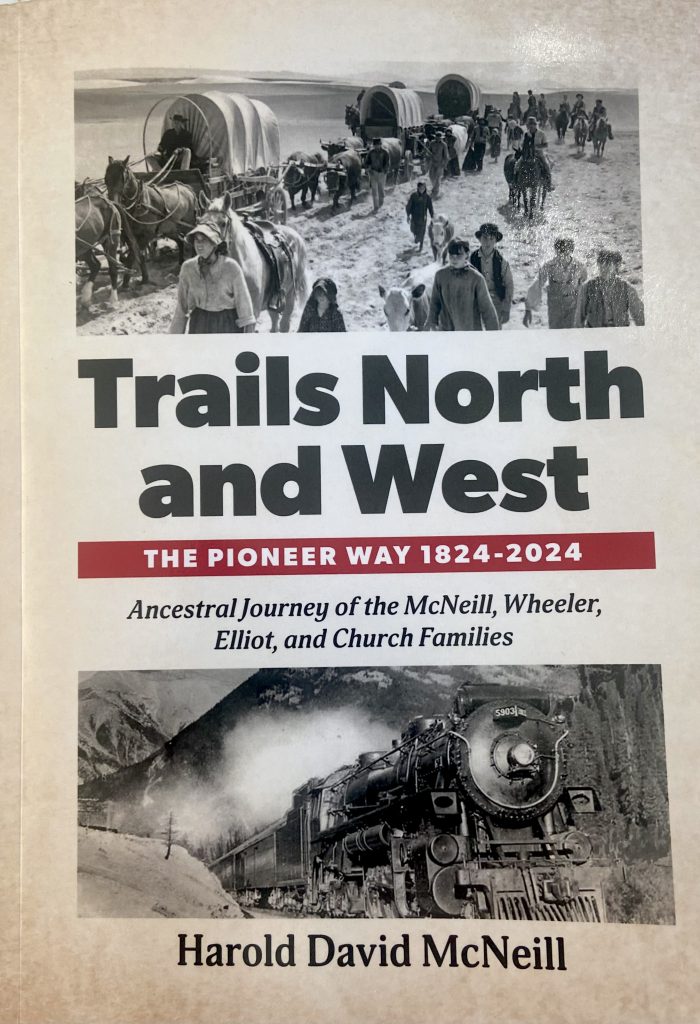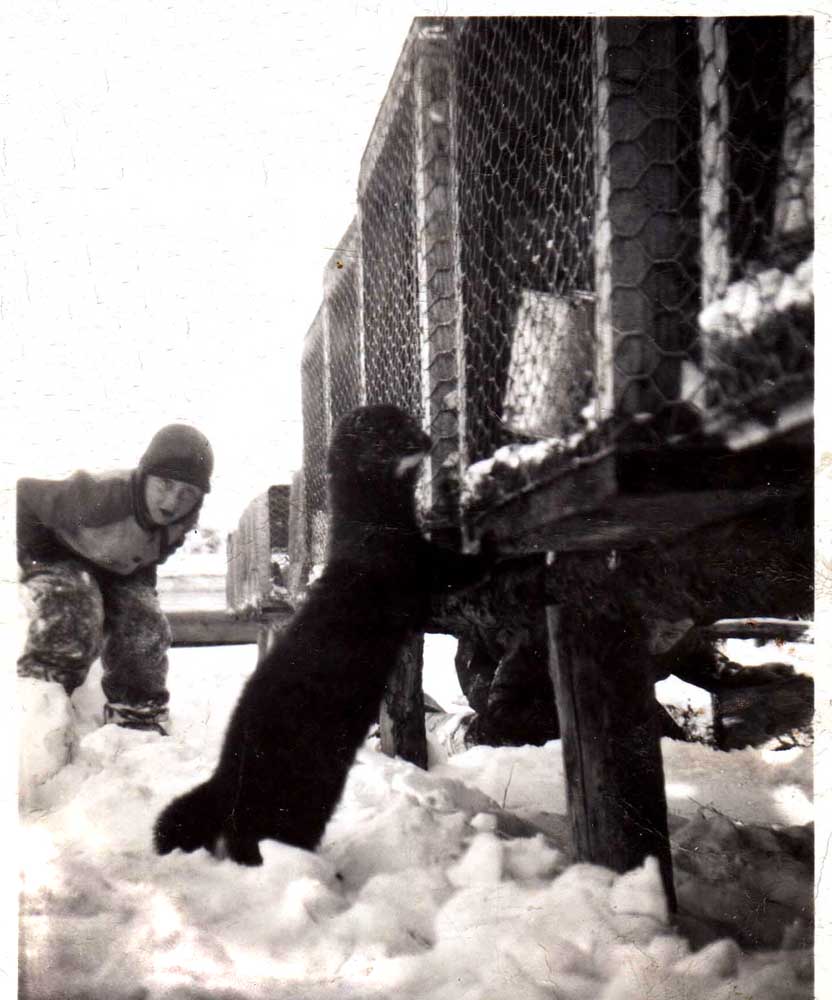Marie Lake: Easy Come, Easy Go – Chapter 4 of 11
Harold playing with his pet mink.
Spring, 1947
Shortly after arriving in Marie Lake, dad told me he wanted to see me down at the mink pens. “Damn, what have I done now?” 1 I could think of plenty, but nothing down by the mink pens. At six, I had been known to get into ‘occasional’ mischief so I was worried as I followed mom and dad toward the pens.
In the enclosure, they walked toward the pen of a mink named “Kits”, a female who always produced large litters. At the Smith Place, dad had given special attention to Kits when she became sick. He and mom helped nurse her back to health and she had become ‘friendly’ but was far from being a pet. Dad could handle her without gloves but we kids never took a chance. We could let her out of her pen and she would stay nearby waiting for the scraps of food we always kept handy. Kits came to Marie Lake with dad’s share of the stock.
They stopped in front of Kit’s pen. Judgment Day!
The full story, including this Chapter, is now in book form;
This Book is available from
Kindle Direct Publishing

Book 2 -Trails North an and West: The Pioneer Way 1824-2024 is now available from Kindle Direct Publishing (KDP) You can search by book title or author name. A preview of the first seventeen pages is provided (link on bottom left on the KDP order page). The preview also includes the Table of Contents.
Note: When ordering four or fewer books, they will be printed and shipped within Canada. An order of 5 or more books may be printed and shipped from the United States. Postage is included in the purchase price when ordering from either country.
If you are thinking of sending books as gifts to others, you may consider having those books mailed directly to the recipient(s), by Amazon, at time of ordering. In this way, you would avoid Canada Post fees which currently run about $20.00 (plus tax) for one or two books, if enclosed in a single mailer.
For more background information on the story, go to the lead story on this blog.
Cheers,
Harold
Link to Next Post: Link to The Trap Line
Link to Last Post: Link to Explosion
Link to Family Stories Index
(1948)
Trackback from your site.

